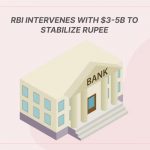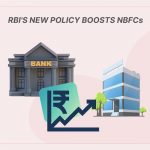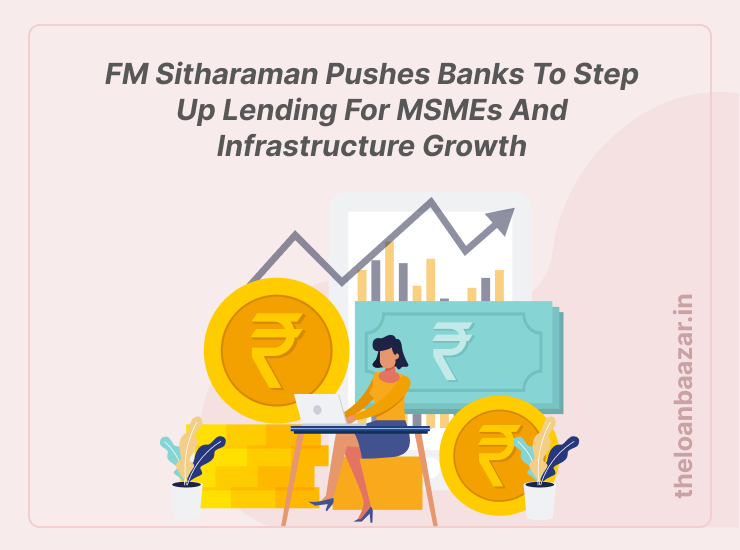India’s Finance Minister, Nirmala Sitharaman, has once again emphasized the critical role of the banking sector in driving economic growth, urging well-capitalized banks to step up lending for Micro, Small, and Medium Enterprises (MSMEs) as well as public infrastructure projects. This move reflects the government’s broader strategy to fuel inclusive growth, create jobs, and strengthen India’s competitiveness on the global stage.
Why the Push for MSME and Infrastructure Lending?
MSMEs – The Backbone of India’s Economy
-
MSMEs contribute nearly 30% to India’s GDP and employ over 110 million people.
-
They are often termed the “growth engines” of India’s economy.
-
However, limited access to affordable credit has been one of their biggest challenges, restricting expansion and modernization.
By asking banks to extend more loans, the government aims to improve liquidity, empower small businesses, and boost their capacity to scale operations.
Infrastructure – Fuel for Long-Term Growth
-
India requires an estimated $1.4 trillion in infrastructure investment by 2030.
-
Public infrastructure projects not only enhance connectivity but also create millions of jobs.
-
Adequate financing ensures smoother execution of projects such as highways, smart cities, renewable energy, and logistics hubs.
By increasing lending to infrastructure, banks can support India’s $5 trillion economy vision.
Current Banking Scenario
-
India’s banking system has witnessed improved capitalization and reduced NPAs (non-performing assets).
-
Public and private sector banks are showing higher profitability and lending appetite.
-
Yet, a significant portion of credit still flows to large corporates, while MSMEs face stringent collateral requirements and higher interest rates.
FM Sitharaman’s call highlights the need to rebalance credit distribution to sectors that directly impact jobs and grassroots growth.
Government’s Supportive Policies
Several initiatives align with this push:
-
Credit Guarantee Fund Scheme (CGTMSE): Helps MSMEs secure collateral-free loans.
-
SIDBI and MUDRA Loans: Enhance financial inclusion for small entrepreneurs.
-
PLI Scheme (Production-Linked Incentive): Encourages manufacturing growth, requiring more bank financing.
-
National Infrastructure Pipeline (NIP): ₹111 lakh crore worth of projects earmarked for execution by 2025.
These programs create a conducive environment for banks to expand lending safely.
Opportunities for Banks
-
Higher Loan Growth: MSMEs and infrastructure offer untapped lending potential.
-
Government Backing: Reduced risk due to credit guarantees and sovereign support.
-
Diversified Portfolio: Expanding into these sectors lowers over-reliance on large corporates.
-
Digital Lending Channels: With fintech partnerships, banks can reach MSMEs more efficiently.
Challenges in Scaling Lending
-
Credit Risk: MSMEs face fluctuating demand, making repayment uncertain.
-
Project Delays: Infrastructure projects often face delays, straining repayment schedules.
-
High Compliance Costs: Smaller businesses struggle with complex banking procedures.
-
Need for Skilled Credit Appraisal: Banks must enhance risk assessment capabilities.
Impact on India’s Economy
-
Boost to Employment: Expanding MSME lending translates to millions of new jobs.
-
Improved Infrastructure: Better roads, ports, and energy supply will attract global investors.
-
Stronger Supply Chains: SMEs connected to large corporates will benefit from easier financing.
-
Inclusive Growth: Rural and semi-urban enterprises gain improved access to funds.
In essence, this lending push is not just about credit flow—it’s about reshaping India’s growth story.
Q1: Why is MSME lending so important for India?
A: MSMEs form the backbone of India’s economy, contributing significantly to GDP and employment. More lending means more growth and innovation.
Q2: How does infrastructure lending benefit the common man?
A: Better infrastructure creates jobs, reduces travel time, improves connectivity, and attracts foreign investments that raise living standards.
Q3: What role do banks play in infrastructure growth?
A: Banks provide long-term project financing, ensuring projects like highways, metro systems, and renewable energy plants are completed successfully.
Q4: Are there risks for banks in lending to MSMEs?
A: Yes, risks include defaults due to market fluctuations. However, government-backed guarantee schemes mitigate much of this risk.
Q5: How will this affect India’s economy in the next 5 years?
A: If banks step up as urged, India could see stronger GDP growth, improved infrastructure, and a thriving MSME sector that drives innovation and exports.
Conclusion:
FM Sitharaman’s call is a reminder that banking must serve the real economy. By boosting lending to MSMEs and infrastructure, India can accelerate its journey towards becoming a $5 trillion economy while ensuring growth is inclusive, sustainable, and future-ready.












